This wiki page will be updated periodically to help guide travelers with quick and relevant information on traveling to and within Peru. It is difficult to find all the pertinent information you need on culture, safety, travel restrictions, and things to do, so we summarize it all here. If anything is stale or outdated, please reach out and let us know! Let’s dive in and explore more high-level information as a Peru trip planner!
Last updated April 21, 2024.
Table of contents
National Information & Culture
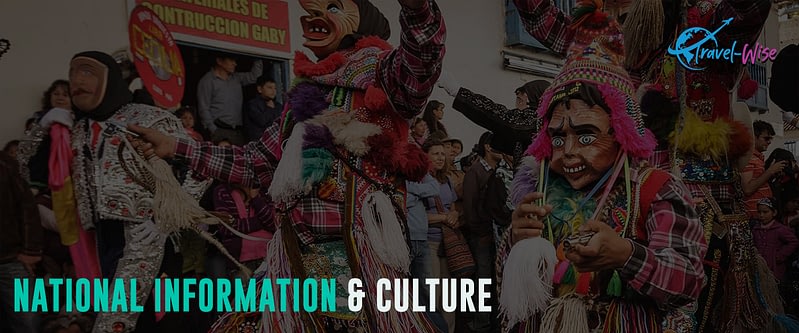
Peru, officially the Republic of Peru, is the third-largest country in South America and one of the world’s most diverse countries. Its enormous territory covers 1.2 million square kilometers and shares land borders with Ecuador, Colombia, Brazil, Bolivia, and Chile. Lima is its capital and largest city, while the country’s official currency is the Peruvian Sol.
A megadiverse country, Peru extends from the Pacific coastal region to the Andes, the Amazon basin rainforest, and the Amazon River. It is a multicultural nation with many languages and ethnic dialects filled with traditions, unique and sumptuous gastronomy, and vast nature reserves. In addition, Peru is home to 13 UNESCO World Heritage Sites and 84 of the planet’s 117 life zones. Can you imagine how many days it would take to explore these tourist attractions and destinations?
These beautiful places are not the only must-see experience in Peru. Somebody can never forget the great culture created by people keen to show you the best hospitality. Of course, not to forget the fantastic foods every local culture and place can offer.
It is difficult to explain in words what being in Peru means. Whether you find yourself exploring the Sacred Valleys, archeological sites, and museums, eating a fine ceviche, surfing waves and exploring the islands, hiking a jungle trail, or visiting Machu Picchu with clear forest clouds under the bright sun on your face, no words can give you a sense of what it feels like to be in Peru than experiencing it for yourself.
The official Peru Tourism website has beneficial information, hints, and tips for travelers, and it is worth checking before your visit.
Special Travel Considerations
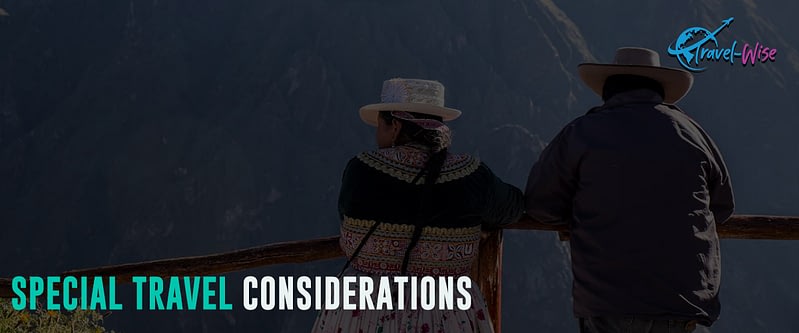
Each country and destination has rules and regulations that every traveler must consider. Hence, please consider the following factors for hassle-free travel to Peru.
Travel Insurance
Flight cancellations, emergencies, accidents, and other unforeseen events can happen anytime. Therefore, while not required, it is always advisable to get travel insurance that covers emergency medical treatment, including COVID-19, repatriation, and evacuation. Travel insurance can protect you against the inconvenience of injury, medical emergencies, theft, and flight cancellations. In addition, it is comprehensive protection in case anything goes wrong with your trip.
Covid-19 Policy
As of November 1, 2022, the Government of Peru announces repealing the Covid-19 restrictions. Therefore, arriving travelers do not need to present a vaccination certificate, undergo quarantine, or present negative COVID-19 test results. In addition, the use of masks is optional for visitors.
Other Vaccinations
There are no compulsory vaccinations for entering Peru. However, the Ministry of Health recommends vaccinating against yellow fever for travelers considering visiting the Amazon region. The vaccine must be given at least ten days before traveling to be effective. For more information about vaccinations, click this link.
Visa Information
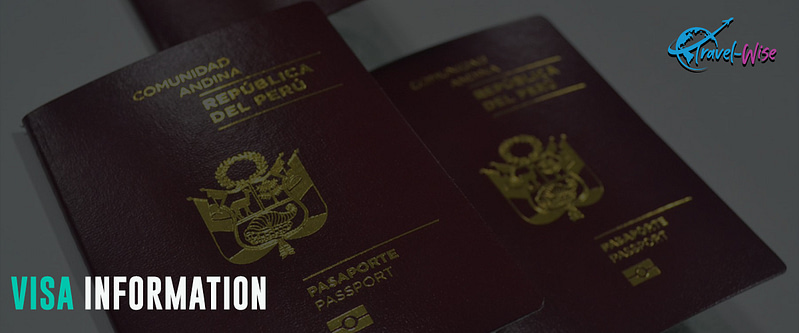
Tourists from most countries in the Americas and Western Europe do not need a tourist visa to enter Peru, with a maximum stay of 180 days, which somebody cannot extend. If you wish to stay longer for business, studies, and work, you need to request the relevant visa at a Peruvian consulate in your own country. To check if you need a visa, please click here. You can also visit the consulates and embassies near you through the Directory of Peruvian Consulates Abroad and the Directory of Peruvian Embassies Abroad.
When traveling to Peru, travelers should present a valid passport with a minimum validity of six months from entry into the country. On the other hand, citizens of Argentina, Brazil, Paraguay, Uruguay, Ecuador, Colombia, Bolivia, and Chile can enter using their national ID documents.
Popular Attractions
Peru is a land of staggering natural beauty and rich cultural heritage. From the majestic Andes mountains to the lush Amazon rainforest and well-preserved Inca archeological sites, Peru makes it to the list of favorite destinations for travelers.
Machu Pichu
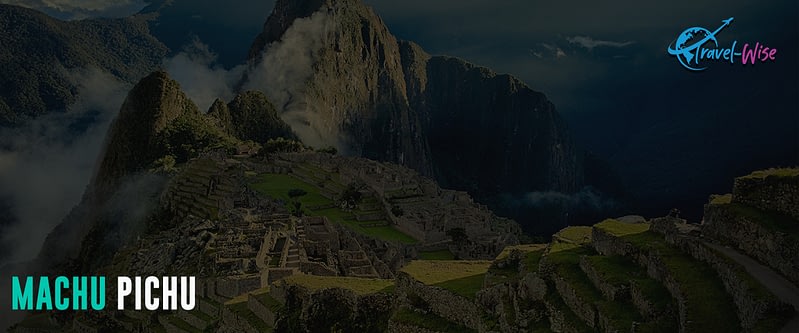
Machu Picchu always comes first to our minds when thinking of Peru. Also known as the Lost City of the Incas, you’ll be stunned by how the ancient Peruvians created and designed the buildings that lasted for centuries. Trekking along the way to the ruins of the Incas allows you to see and witness the magnificent views of the Sacred Valleys of the Incas. It can be challenging, but you will be astonished by its beauty when reaching the citadel of Machu Picchu.
Cusco
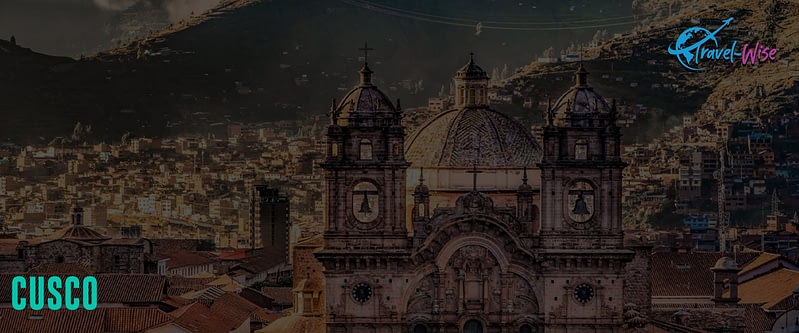
The Imperial City of Cusco is the gateway to Machu Picchu. It was created and developed as a complex urban center with distinct religious and administrative functions, perfectly defined, distributed, and organized as a spiritual and government center.
Nazca Lines
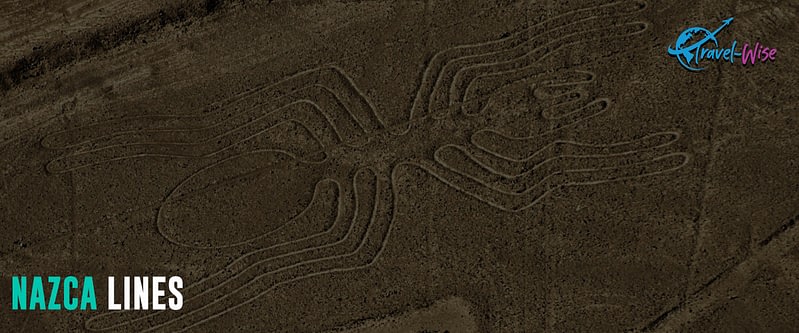
The Nazca Lines are a series of ancient figures of animals like spiders, monkeys, fish, lizards, and others that dominate the San Jose desert and the Nazca Valley. Over 10,000 lines, with 300 different plant and animal geoglyphs as enormous as 200 meters above the ground, are estimated to have been created between 400 and 650 AD. The mystery of how it was made and got there remains unknown. Can you imagine how the ancient people did these beautiful wonders of Peru?
Colca Canyon
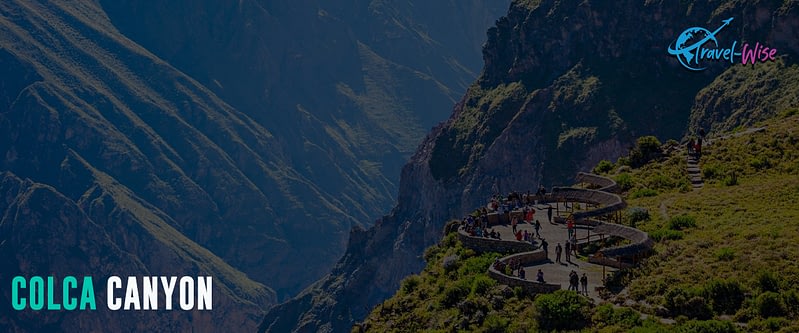
Colca Canyon is considered one of the best Peru treks, along with the Inca trail, and is one of the deepest canyons in the world, thought to be twice as deep as the Grand Canyon at certain parts. It is a great place to spot the giant Andean condors flying overhead. Unlike the Grand Canyon, Colca is habitable, and the oasis at the bottom of the canyon can serve as a sanctuary after the hike.
Paracas
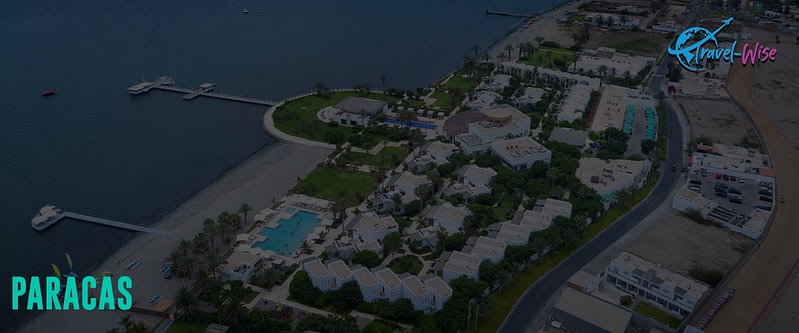
Paracas is a town on Peru’s west coast known for its beautiful beaches. It is home to sea lions, pelicans, and penguins. Water activities like scuba diving, fishing, and windsurfing are best available in its coastal areas. For nature lovers, one should not skip visiting the Paracas National Reserve, the oldest marine reserve in Peru and recognized as a UNESCO World Heritage Site.
Lima

Lima is the capital city of Peru, and your visit will never be complete without a stop in the capital of each country. The city is defined by its historical significance during the colonial era, as evidenced by the architectural designs depicted by the Plaza Mayor.
Lake Titicaca
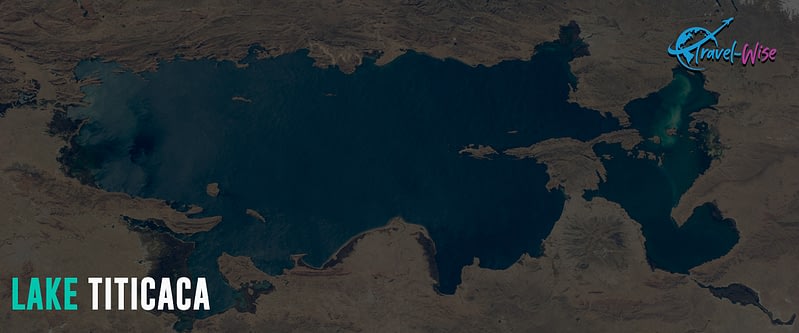
Lake Titicaca is the largest freshwater lake in South America and the largest high-altitude lake in the world. It covers over 3,000 square miles, sits at 12,500 feet above sea level, and lies along the borders of Peru to the west and Bolivia to the east. The town surrounding the lake is a popular tourist hub and offers a mix of colonial architecture and bustling markets.
Primary Spoken Language(s)
Spanish is Peru’s official language. However, the country has 47 indigenous languages, including Quechua and Aymara. Though not required, speaking some basic Spanish will help you in many situations. If not, start with an app like Duolingo or Memrise to learn basic vocabulary, or take a more comprehensive course like Rosetta Stone. The Google Translate app can also be your best friend for this!
Safety Concerns
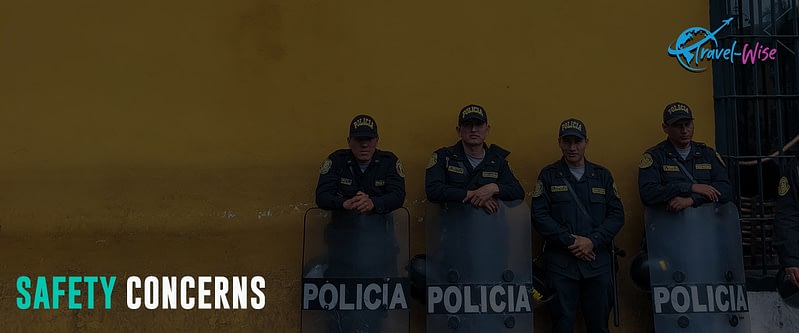
Peru is considered one of South America’s safest countries for travelers, ranking 102nd out of 163 countries on the 2023 Global Peace Index. In addition, Peru has a Level 2 Travel Advisory from the US Department of State as of November 15, 2023. Hence, travelers can practice safety precautions as anyone would when visiting other countries.
Crime is rampant in major cities, including Lima and Cusco. However, the biggest concern for travelers is petty theft, such as snatching and robbery. These can occur in broad daylight hours, and the risk of crime increases at night.
Hence, watch out for bag snatchers and do not carry large sums of money in the bigger cities and on overnight buses. Do not flaunt expensive jewelry, and keep objects of value hidden. As much as you can, avoid taking your phone out in public. Also, always keep an eye on your belongings. Do not change money in the street. Instead, call a cab by telephone or use a mobile app when taking taxi companies. When availing of excursions, ask for advice at your hotel or your trusted travel experts.
Always keep a copy of your identity documents like passport and ID with you and have the originals in a safe place with other valuables, in your hotel safe or at home.
In an emergency, dial 105 for the police department and 116 for ambulance and health emergencies.
Health Hazard
Peru is at high risk of mosquito-borne diseases, including dengue, Zika virus, and malaria. In fact, the country’s health minister declared a health emergency due to the rapid increase of dengue cases in Peru for the first two months of 2024. Hence, ensure that you have insect-proof accommodation, use repellant, and wear long, loose, and light-colored clothing. Additionally, consult a doctor about malaria prevention and get vaccinated for yellow fever.
Tap water is not potable in Peru, so always bring your own water bottle. It will keep you hydrated and safe while protecting Mother Nature. If you plan to go hiking, check the weather in advance, and if you are going to Machu Picchu, arrive early to adjust to the high altitude.
Budget Considerations
Peru is not an expensive country to visit. Here, let us classify your estimated budget for a two-week stay into three categories: budget travelers, average tourists, and luxury stays.
Accommodation
Dorm beds in hostels and guesthouses go as little as $8, while a private room costs around $16. An average three-star hotel, including breakfast, ranges from $50 to $80. Travelers in Peru can also stay in a five-star hotel for as low as $100 per night.
Food
Food lovers will love Peru as food there is inexpensive! Travelers can choose from an array of delicious street foods for $1.50 or less! Dining in cheap diners costs around $3 and between $4 and $7 in casual restaurants serving Peruvian cuisine. Additionally, many fast food restaurants also serve combo meals for $5—meanwhile, travelers who want to splash out at fancy restaurants for $12.
A must-try is their national dish, ceviche. Other popular Peruvian dishes are stir-fried beef, roasted cuy (guinea pig), arroz con pato (rice with duck), and roasted chicken.
Attraction and Transportation
Peru has many attractions, and entrance costs vary. For example, travelers can visit the Nazca Valley and its ancient geoglyphs for free. But for a better view, travelers can take a scenic helicopter tour for around $110 and be amazed by these Nazca Lines. Meanwhile, admission to Colca Canyon is $18, and tickets to Machu Picchu cost $45 and must be purchased in advance.
On the other hand, travel by bus is the most common way to get around the country. A short bus trip around the city costs $0.60, while a short taxi ride starts at $3. For comfort and flexibility, travelers can hire a compact car for around $40 and $100.
Average Two-week Cost
Budget travelers can explore Peru for at least $40 daily or $560 in two weeks. This covers the costs of staying in hostel dorm beds and dining in cheap diners. The budget also includes taking public transportation and mostly doing free activities like hiking.
On a mid-range budget of $110 daily or $1540 for two weeks, travelers have the comfort of a three-star hotel and occasional dining in mid-range restaurants. The budget also includes taking occasional taxis and doing paid tours and activities.
Lastly, travelers can enjoy Peruvian luxury from $200 daily or $2800 as the minimum ceiling for two weeks. The cost covers five-star hotel accommodation and splashing on meals wherever they want. The budget also includes car rental and availing all the paid tours and activities they want. So, for them, the sky is the limit for travel.
However, keep in mind that these are just estimates. Some days, you spend more, and some days, you might pay less.
Customs And Import Restrictions
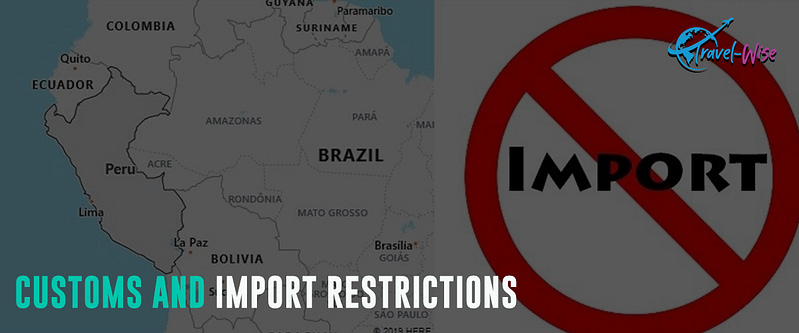
Per Peruvian customs regulations, all new and used articles that a traveler may reasonably require for their use or consumption, which do not appear to be for commercial use, are exempt from duty. When entering Peru, a traveler must correctly complete the Baggage Declaration if they have articles or goods to declare. In addition, all taxable articles must be listed. Visit this link for the list of exempt goods.
Climate Considerations
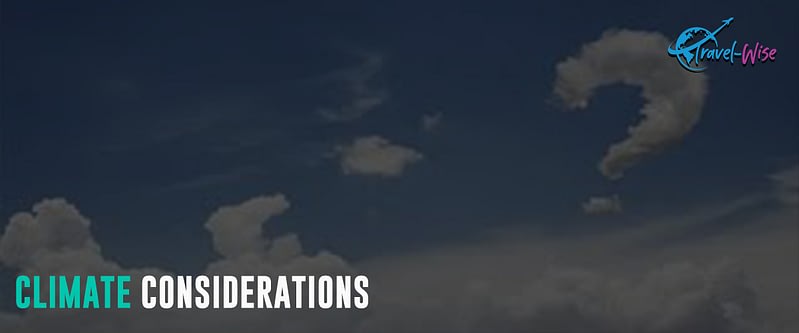
Peru’s position close to the equator makes it a tropical country, with the highest temperature recorded at 38 degrees Celsius in low-altitude places and as low as -12 degrees Celsius in high-altitude areas.
Summer, from January to March, is also the rainy season in the highlands and jungle. Autumn extends from April to June, winter is between July and September, and Spring is between October to December.
Coast
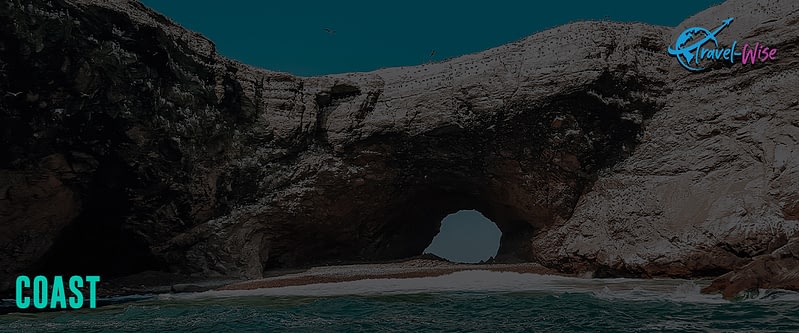
Tacna to Piura has a warm temperate climate, moderate but high humidity, and thick mist during the Winter. In Summer, there is very little mist, and the temperature reaches as high as 30 °C.
On the other hand, Piura to Tumbes has a warm and arid climate. Heavy rains usually occur between December and April, mainly on higher ground, and the average temperature is 24 °C.
Highlands
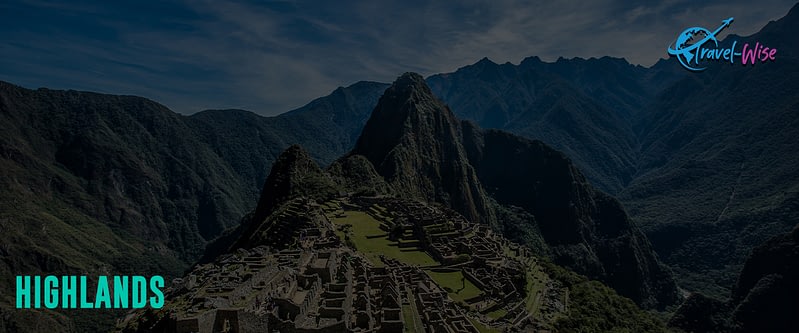
The highlands have two seasons. Summer, between April and October, is the ideal time to visit. It is sunny during the day, and at night, it is cold with little rain. Winter is from November to March when rain is frequent and heavy. During the day, the temperature can reach as high as 24 °C and drops to -3 °C at night.
The Jungle

Like the highlands, the jungle has two well-defined seasons: the rainy season between November and March, with abundant rainfall, and the relatively dry season from April to October, which is the ideal time to visit. Humidity is very high throughout the year, with occasional “cold snaps” or “surazos” occurring between May and August, when the temperature falls to 8 °C —12 °C.
Primary Transportation Options
Peru has five international airports: Lima, Arequipa, Cusco, Iquitos, and Piura. They also have over a dozen airports with domestic flight services in the biggest cities. Though flying between destinations is not always the cheapest option, it is much quicker. For example, a flight from Lima to Cusco takes just over an hour instead of more than 21 hours by bus.
Riding by bus is the primary public transportation in Peru. The main roads are in good condition and safe for the riding public, with visible highway police. Most cities also have bus terminals, and numerous companies operate almost everywhere, offering varying services by comfort level, speed, and price.
Taxis
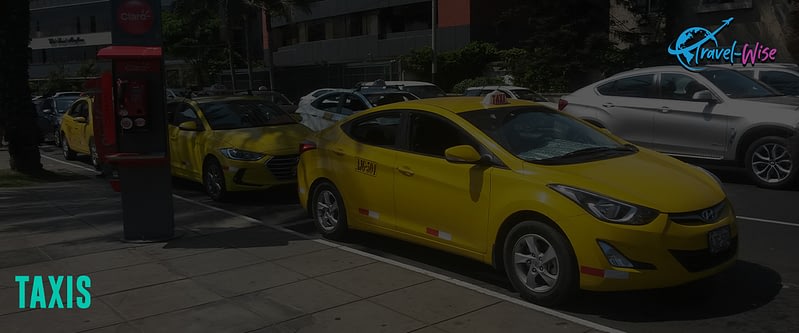
Taxis in Peru do not have meters. If you flag one down in the street, you better negotiate the price there and then, but there is a risk to your safety. Therefore, it is much better and advisable to use secure taxi companies by phoning for a cab or using a mobile app to book. Aside from taxis, Uber is also an alternative in Lima and other big cities in the country.
Car Rental

Car rental services are also available. If you wish to rent, always have your license ready, with a copy of your passport and the rental contract. International driving licenses are valid for one year, while those of any other country are for 30 days.
Tourist Trains
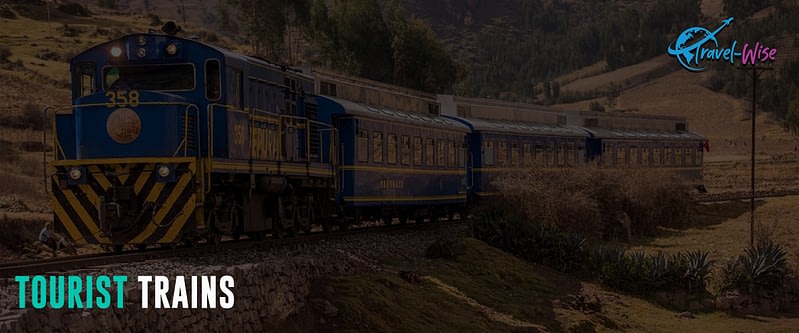
Tourist trains are available to some of the most visited attractions. Available tourist rail routes are Ollantaytambo-Machu Picchu, Cusco-Machu Picchu (Aguas Calientes or Machu Picchu Pueblo), Puno-Cusco, and Lima-Huancayo which only operates the route on specific dates (July, August, October, and November).
Mass Transportation In Lima
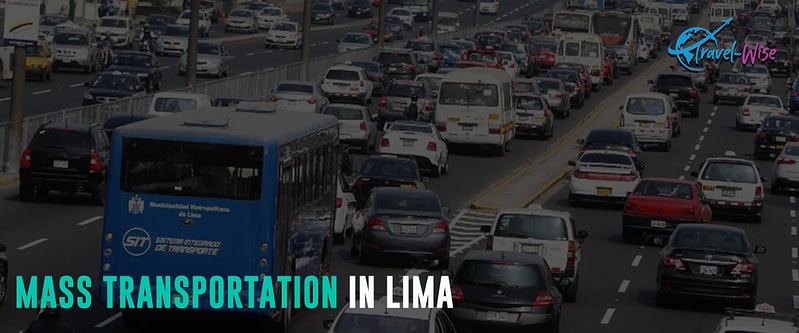
Lima, Peru’s capital, is the only city developing an integrated mass bus and train transportation system. These urban transportation services include the Metropolitano (a rapid bus service) and the Lima Metro (an electric train). You can find out more about these services at www.metropolitano.com.pe/.
Start Trip Planning
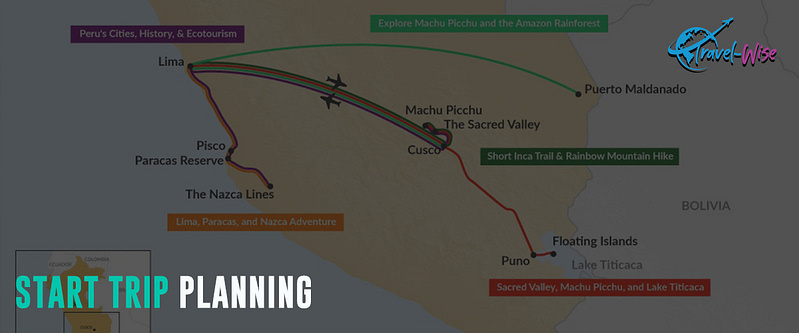
Travel-Wise is made from the ground up to help people travel more, break down the barriers that make it challenging to get going, and start your journey as painlessly as possible. Bookmark our other Country Guides to help kick-start your research for future travels. We also offer templated itineraries from our staff and community that help serve as a building block for your trip plans. Alternatively, we also utilize AI to offer a way to generate itinerary ideas. It saves much time just getting you up and running with a template. From there, you can use the trip planner to create your customized itinerary, invite friends and family for collaboration, find others from Travel-Wise to join the trip, book and track important information, journal, and share your experiences at the end or along the way!

